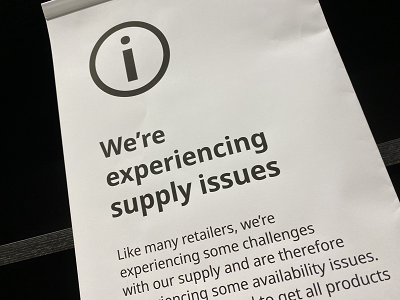
If you’re the personal shopper to a cat or dog, you’ve likely found yourself in this dilemma: the shelf that always holds their usual food is empty, the ETA for more stock is unknown, and you need to choose something else – but what? Over the last two years, thanks to the pandemic, pet food shortages have caused stress and frustration for pet owners AND their pets, like ultra-picky cats and dogs with digestive sensitivities. Supply chains have been disrupted, pet foods have been hoarded, and to top it off, there are more pets to feed than ever, with so many people purchasing or adopting pets to keep them company while spending more time at home. Even some natural disasters are causing ingredient shortages; for example, kangaroo meat is scarce due to the tragic forest fires in Australia. Well, our pets still need to eat, and we want them to eat the best! Here’s a guide to finding the best alternatives for your pet.
Pet food labels contain important information. Take note of the small print and don’t get distracted by buzz words like “Natural” or “No Corn.” Those words are meant to appease us as consumers, not our pets. Look for caloric content, macronutrient percentages (protein, carbohydrates, fat), and the main sources of protein (e.g., chicken meal, salmon, lamb) and carbohydrate (e.g., cornmeal, sweet potato, oats) in the diet. The goal is to find an alternative diet as similar as possible for your pet in terms of palatability, digestibility, and weight maintenance.
It’s also important to find out which organization regulates pet food standards in your country and which statements to look for. Pet food in the United States and Canada is regulated by the Association of American Feed Control Officials, and in Europe, it’s regulated by the European Pet Food Industry Federation. Pet food manufacturers must indicate whether their product meets the respective guidelines for gestating and lactating animals, growth, adult maintenance, or if it is suitable for all life stages. Some manufacturers will go the extra mile and test their food using standard procedures to prove it does in fact meet the nutritional requirement guidelines (otherwise, we have to take their word for it) Here is an example of a statement:
“Feeding tests using AAFCO procedures substantiate that PET FOOD NAME provides complete and balanced nutrition for growing puppies and gestating or lactating adult female dogs.”
A diet transition is critical! Pets are used to eating the same food every day, so how a new food is introduced can be a dealbreaker. If a pet gets an upset stomach with the new food, it could be due to a sensitivity to one or more ingredients, or because the new food was introduced too quickly. If your cat initially loves the new food but feels unwell because her body didn’t have enough time to adjust to it, she will likely then associate the new food with sickness and refuse to eat it. Here are some tips for a successful diet transition:
- Be prepared! Go shopping when you still have a week’s worth of your pet’s normal food so that in the event it’s out of stock, you will have enough for a gradual transition to the alternative.
- A transition period should last about seven days. During the first three days, meals should consist of three-quarters previous food and one-quarter new food. The next two days should be half and half. The last two days, or until you run out of the current food, should be three-quarters new food and one-quarter previous food.
- If your pet eats dry and wet food and both are out of stock, only transition one at a time, starting with the format they eat the most. For example, if your dog’s meals are predominantly kibble and only a topdressing of canned food, transition the kibble first, and if successful, the canned next.
What about pets with conditions requiring dietary management? Therapeutic and prescription veterinary diets are also susceptible to supply shortages and uncertainty in the pet food industry. If your veterinarian has prescribed a specific diet for your pet and it becomes unavailable, ask your veterinary team for a suitable alternative. There are retail diets out there marketed for skin and stomach sensitivities, weight management, urinary tract health, and so on, but they are no comparison to the veterinary diets formulated (and rigorously tested) for those issues.
Is there a silver lining to all this hassle? Sure! You might find a diet your pet loves more but otherwise would never have tried. More importantly, facing these challenges, or even just preparing for them, will make you a more informed pet owner, empowering you to make better diet decisions for your pet.